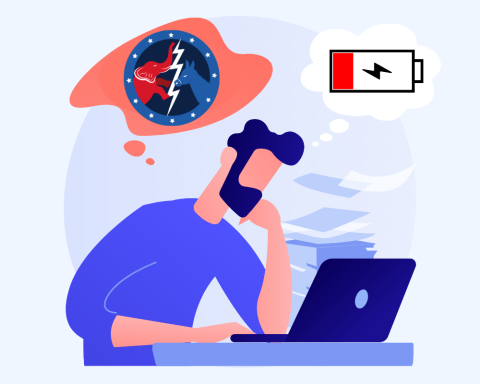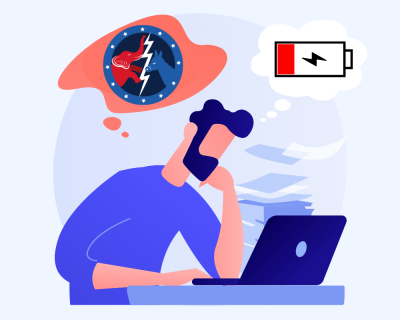Eating disorders are serious but treatable illnesses that involve irregular eating habits and a severe concern about body weight, shape, or overall appearance. They affect all genders, although rates among women and girls are 2.5 times greater than among men and boys. Transgender individuals experience eating disorders at rates significantly higher than cisgender individuals (Diemer et al., 2015).
Overview
Eating disorders are serious but treatable mental illnesses that can affect people of every age, sex, gender, race, ethnicity, and socioeconomic group. National surveys estimate that 20 million women and 10 million men in America will have an eating disorder at some point in their lives.
While no one knows for sure what causes eating disorders, a growing consensus suggests that it is a range of biological, psychological, and sociocultural factors. While they may begin with preoccupations with food and weight, they are most often about much more than food. It is important to understand that the factors that contribute to eating disorders are complex and multifaceted; they are not simply about weight and they are certainly not choices.
Signs and Symptoms
Types of Eating Disorders
Treatment
ADAA Resources
Other Resources
Trending Articles
Signs and Symptoms
It is important to be aware of some of the warning signs of an eating disorder. The below list isn’t intended as a checklist, but describes the common symptoms of an eating disorder. Someone struggling with an eating disorder generally won’t have all of these signs and symptoms at once, and the warning signs vary across eating disorders and don’t always fit into neat categories. Rather, these lists are intended as a general overview of the types of behaviors that may indicate a problem.
Common emotional and behavioral symptoms:
- In general, behaviors and attitudes that indicate that weight loss, dieting, and control of food are becoming primary concerns
- Preoccupation with weight, food, calories, carbohydrates, fat grams, and dieting
- Refusal to eat certain foods, progressing to restrictions against whole categories of food (e.g., no carbohydrates, etc.)
- Appears uncomfortable eating around others
- Food rituals (e.g. eats only a particular food or food group [e.g. condiments], excessive chewing, doesn’t allow foods to touch)
- Skipping meals or taking small portions of food at regular meals
- Any new practices with food or fad diets, including cutting out entire food groups (no sugar, no carbs, no dairy, vegetarianism/veganism)
- Withdrawal from usual friends and activities
- Frequent dieting
- Extreme concern with body size and shape
- Frequent checking in the mirror for perceived flaws in appearance
- Extreme mood swings
Common physical symptoms:
- Noticeable fluctuations in weight, both up and down
- Stomach cramps, other non-specific gastrointestinal complaints (constipation, acid reflux, etc.)
- Menstrual irregularities — missing periods or only having a period while on hormonal contraceptives (this is not considered a “true” period)
- Difficulties concentrating
- Abnormal laboratory findings (anemia, low thyroid and hormone levels, low potassium, low white and red blood cell counts)
- Dizziness, especially upon standing
- Fainting/syncope
- Feeling cold all the time
- Sleep problems
- Cuts and calluses across the top of finger joints (a result of inducing vomiting)
- Dental problems, such as enamel erosion, cavities, and tooth sensitivity
- Dry skin and hair, and brittle nails
- Swelling around area of salivary glands
- Fine hair on body (lanugo)
- Cavities, or discoloration of teeth, from vomiting
- Muscle weakness
- Yellow skin (in context of eating large amounts of carrots)
- Cold, mottled hands and feet or swelling of feet
- Poor wound healing
- Impaired immune functioning
ADAA Resources
- It Gets Better: Not Just for Everyone Else - ADAA blog post
- Can You Fully Recover from an Eating Disorder? - ADAA public webinar
- Eating Disorders & Co-Occurring Mental Health Conditions - ADAA professional webinar
Other Resources from the National Eating Disorder Association (NEDA)
Trending Articles:
- A Patient's Guide to Eating Disorders
- Camila Mendes’ Comments On Her Eating Disorder Show How Healing Isn’t Linear
- Diets Didn’t Work For Me. Neither Did “Wellness Eating”
Sources:
Hudson JI, Hiripi E, Pope HG Jr, and Kessler RC. (2007). The prevalence and correlates of eating disorders in the National Comorbidity Survey Replication. Biological Psychiatry, 61(3):348-58.

Thank you to our partner organization, National Eating Disorder Association.
















